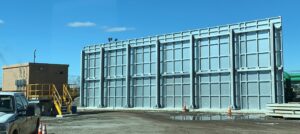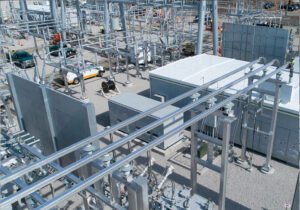You will hear a lot nowadays about companies offering Critical Infrastructure Protection solutions. The question in almost everyone’s mind is: What is Critical Infrastructure Protection? Why is it important? Where is the threat?
Unfortunately, these questions seem not to have clear answers leaving many confused. In this article, we will define CIP and highlight its importance.
What is CIP?
According to the United States Department of Homeland Security (DHS), critical infrastructure refers to any virtual or physical networks, systems, and assets critical to the USA that their destruction or incapacitation would harm national security, public health, and safety, economy, or any combination of them. In simpler terms, critical infrastructure consists of all people, systems, or things that must always be operational and intact for daily works and lives to succeed.
Thus, Critical Infrastructure Protection involves the process of protecting critical infrastructure. These include physical assets, citizens, critical cyber networks that are necessary for public safety, economy, and national security.
Who threatens critical infrastructure? As critical as it is, critical infrastructure faces threats from various quarters. These include nature (floods, quakes, tornadoes), people (hackers, thieves, terrorists), and accidents involving biological, chemical, or nuclear substances.
Why is CIP Important?
The last decade has seen an alarming increase in terrorism, hacking, and general criminal activities. In their evil acts, these criminals target critical infrastructure in energy and utility sectors to derail communication and generally cause chaos. Others have used cyberattacks to shut down systems and deny services.
With all those glaring dangers, securing our critical infrastructure becomes mandatory. One key department in ensuring the safety of our national assets is the United States Fire Administration (USFA). In October 2000, the department initiated a protection program to focus on community emergency response by coordinating with Local Emergency Planning Committees to promote awareness of CIP.
To advance the issues and promote the program, USFA created a Critical Infrastructure Protection Information Center (CIPIC). It highlights the efforts of first responders in CIP all over the USA. Some examples of critical infrastructures for the fire and emergency medical services are:
- Fire and EMS Stations, Networks, and Apparatus
- Paramedics and Firefighters
- 911 Communication Centers
- Water reservoirs and Pumping Centers
- Busy Roads and Highways
- Busy Bridges and Tunnels
- Computer Networks
Firefighters and EMS providers are important elements of homeland security. Working hand-in-hand with law enforcement personnel, they form the most critical infrastructure. For that reason, their welfare should be prioritized.
The responsibility to decide which infrastructure should be protected lies with the community leaders, including those of emergency first responders. But, limited resources complicate these decisions. To come up with a list of the most critical infrastructure to be given preference, CIPIC recommends the implementation of the CIP process. This is a model that helps leaders in determining what needs protection and when. The CIPIC developed an easy to comprehend CIP Process Job Aid to guide the responders.
DuraBarrier USA believes that although all critical infrastructure threats cannot be prevented, CIP can go a long way in reducing the risks. Please visit https://firebarrierexperts.com/critical-infrastructure to discuss your requirements and needs.
Sinisi Solutions
75 Main St, Manasquan, NJ 08736
732-232-2100
Social Accounts




